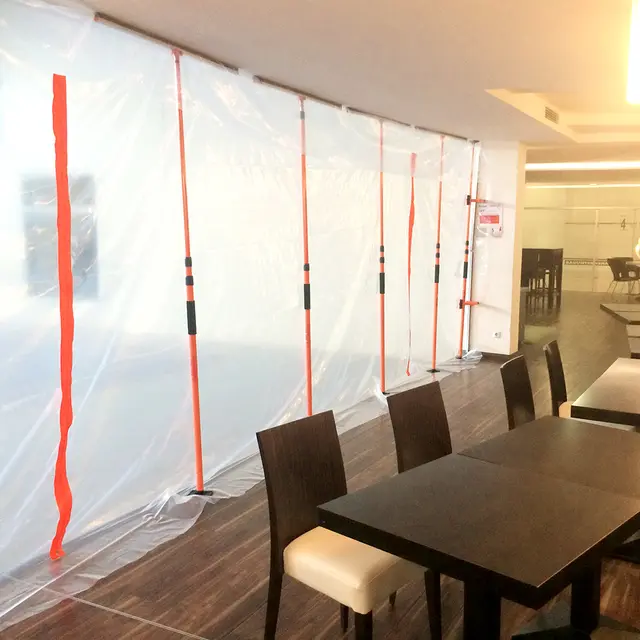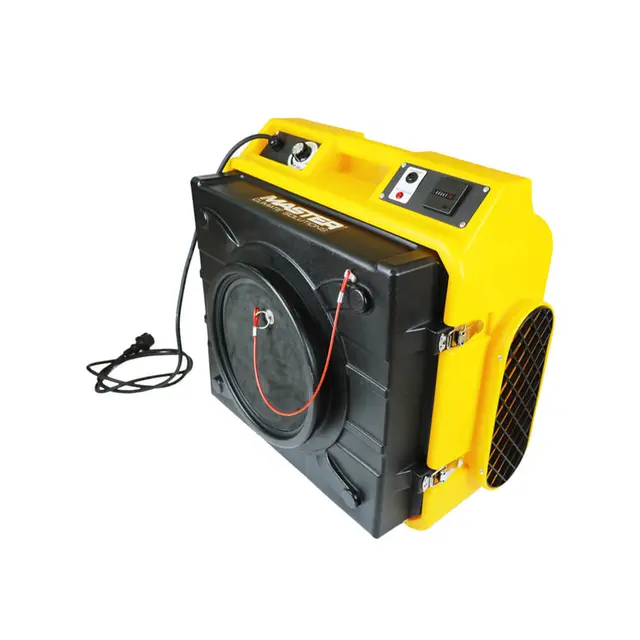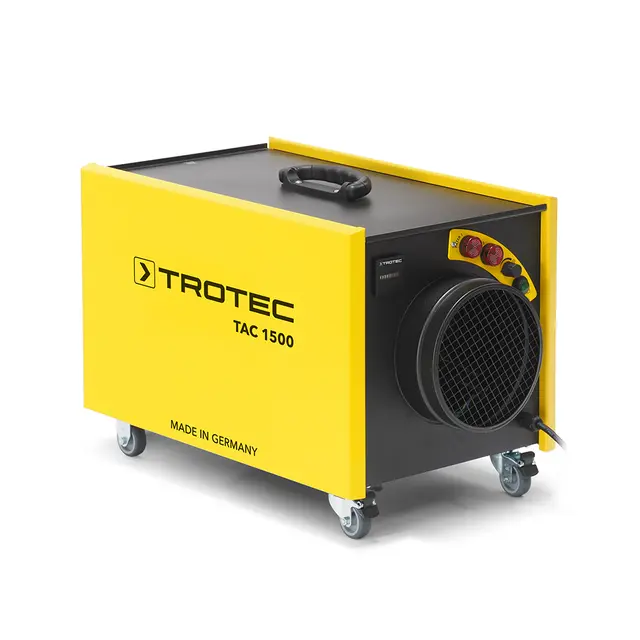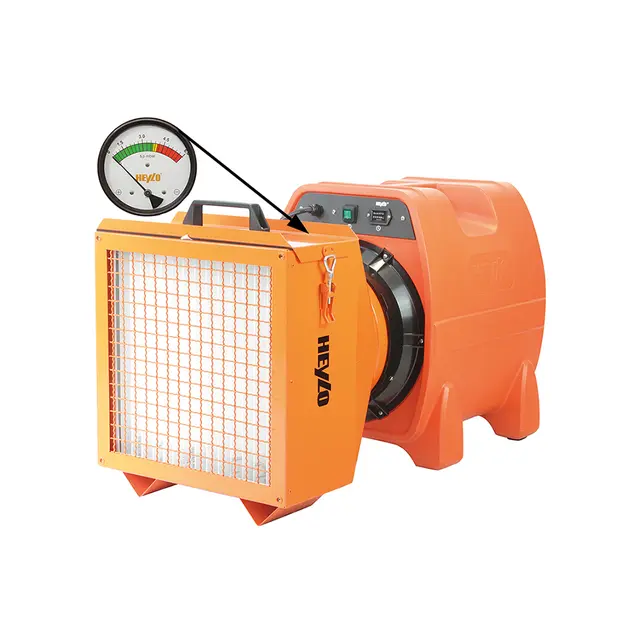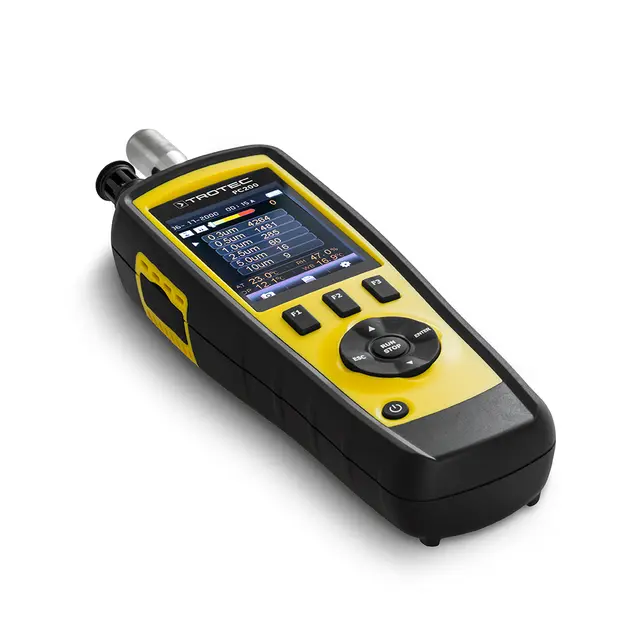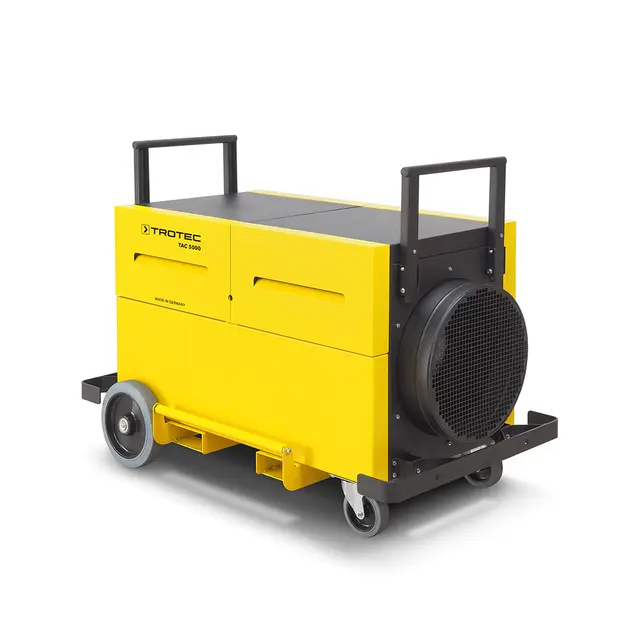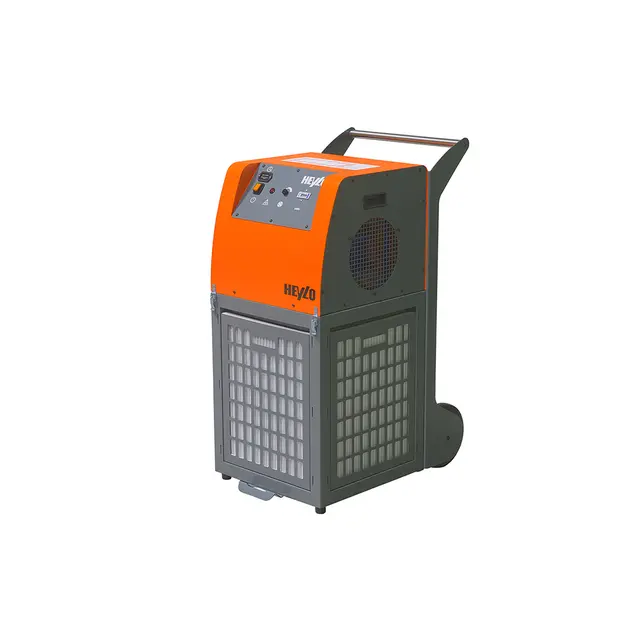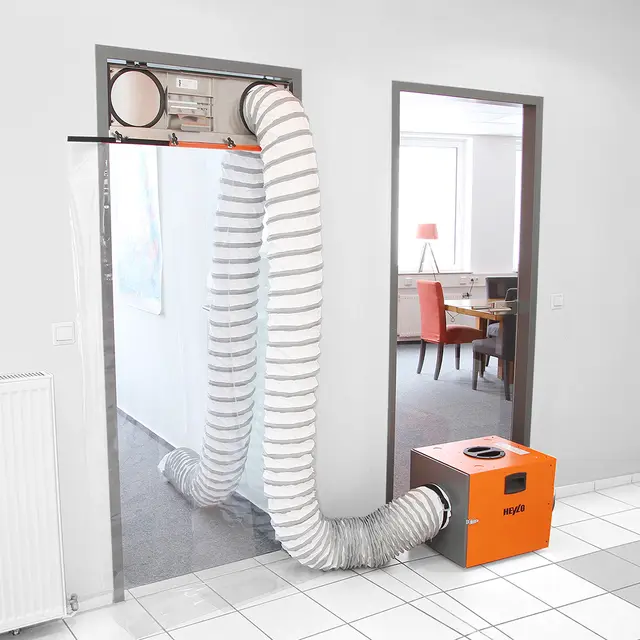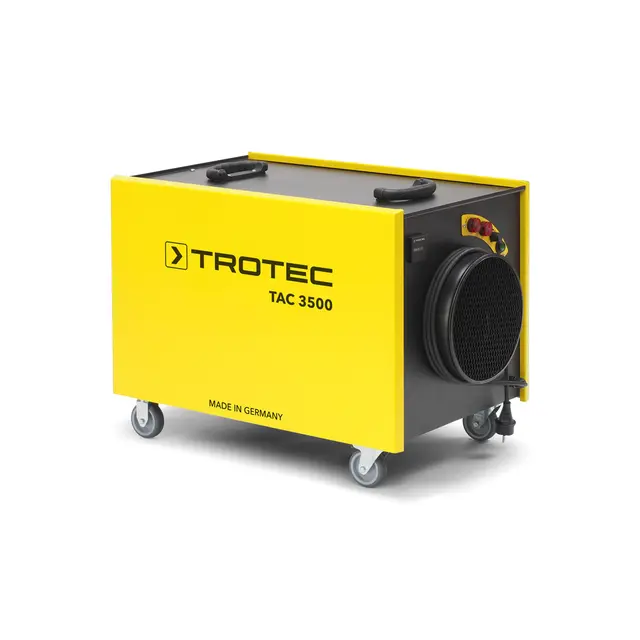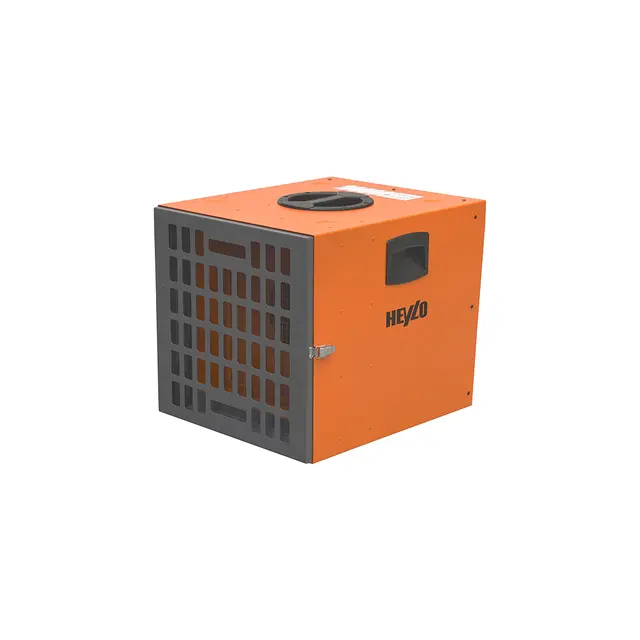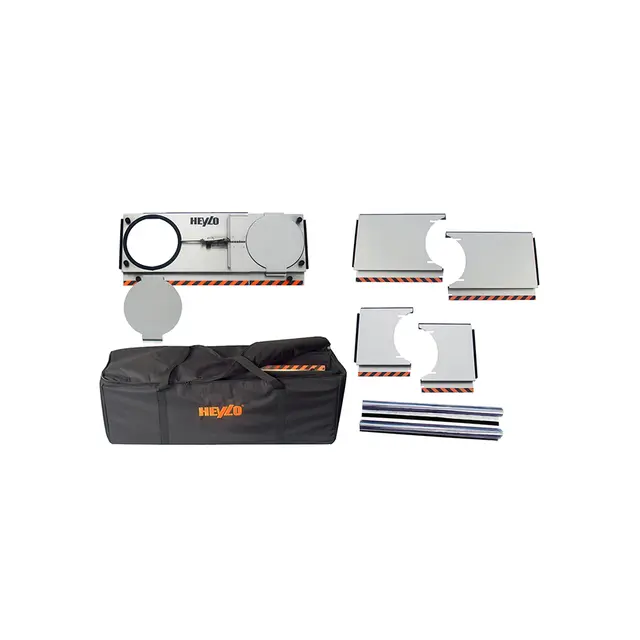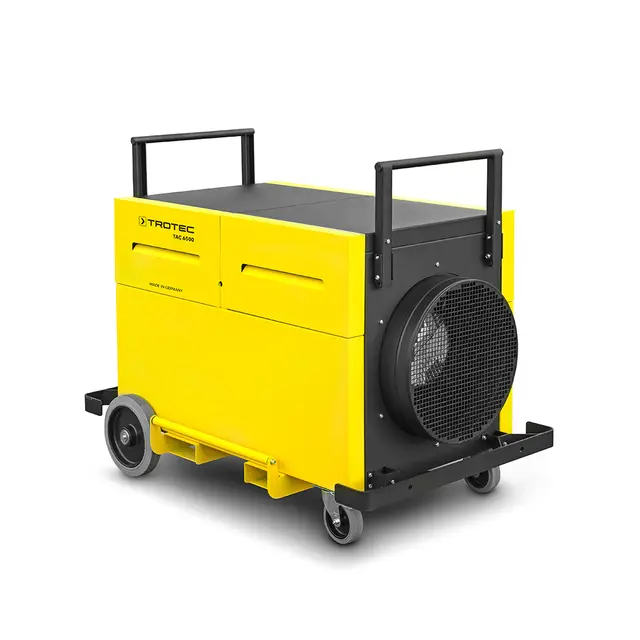How to monitor and control construction dust levels
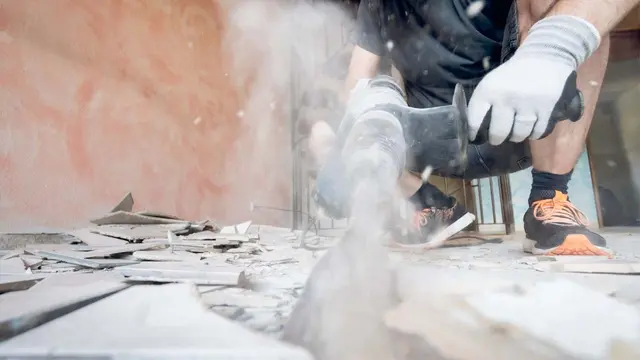
- Home
- Insights
- Air cleaning insights
- How to monitor and control construction dust levels
Monitoring and controlling dust levels on construction sites is crucial to the health and wellbeing of workers. To mitigate the spread of this potentially hazardous substance, teams need to take a proactive approach.
The presence of fine construction dust on building sites can quickly become hazardous to health and a workplace safety concern.
Sawing wood, using power tools such as grinders and grit blasters, and dry sweeping are just some of the tasks that kick up microscopic materials and impact on air quality.
Additionally, the size of the space and the duration of the work will influence the concentration of construction dust in the air, and how dangerous it is to breathe.
Why is it important to monitor dust levels?
Keeping an eye on the levels of fine dust in the air on a construction site is critical to the health and safety of workers. This is because, in large enough concentrations, dust can become a significant danger to people’s wellbeing, potentially causing illness for teams working on-site.
While concentration is key, keeping an eye on dust levels can also help identify what particles are in the air. This is important, as different types of dust can present different risks and should inform the dust management strategy.
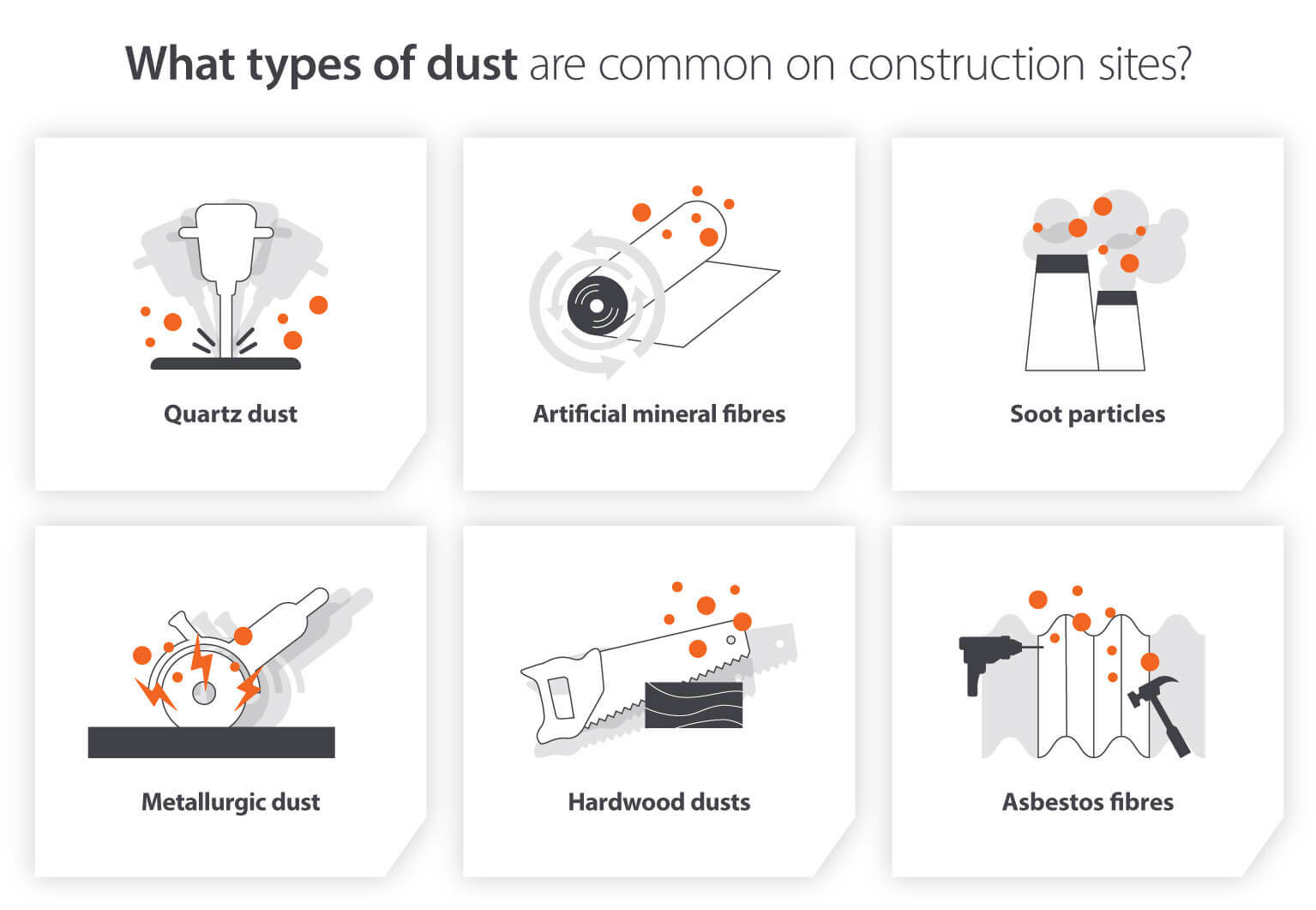
As well as the safety and wellbeing of employees, it is crucial to carry out dust monitoring on worksites because many local and national authorities have air quality guidelines in place that must be adhered to.
Different organisational bodies around the world have varying parameters for what they deem an acceptable risk. Countries like the UK are regulated by the HSE, while Germany is regulated by the BG BAU.
How harmful is construction dust?
Construction dust can be harmless with limited exposure. However, breathing in high amounts of these airborne contaminants regularly is what may jeopardise the health of staff.
Although all types of particles are dangerous in large enough quantities, health risks can vary depending on the type of dust inhaled, the time spent in a polluted environment, the size of the particle and the location of the deposit in the body.
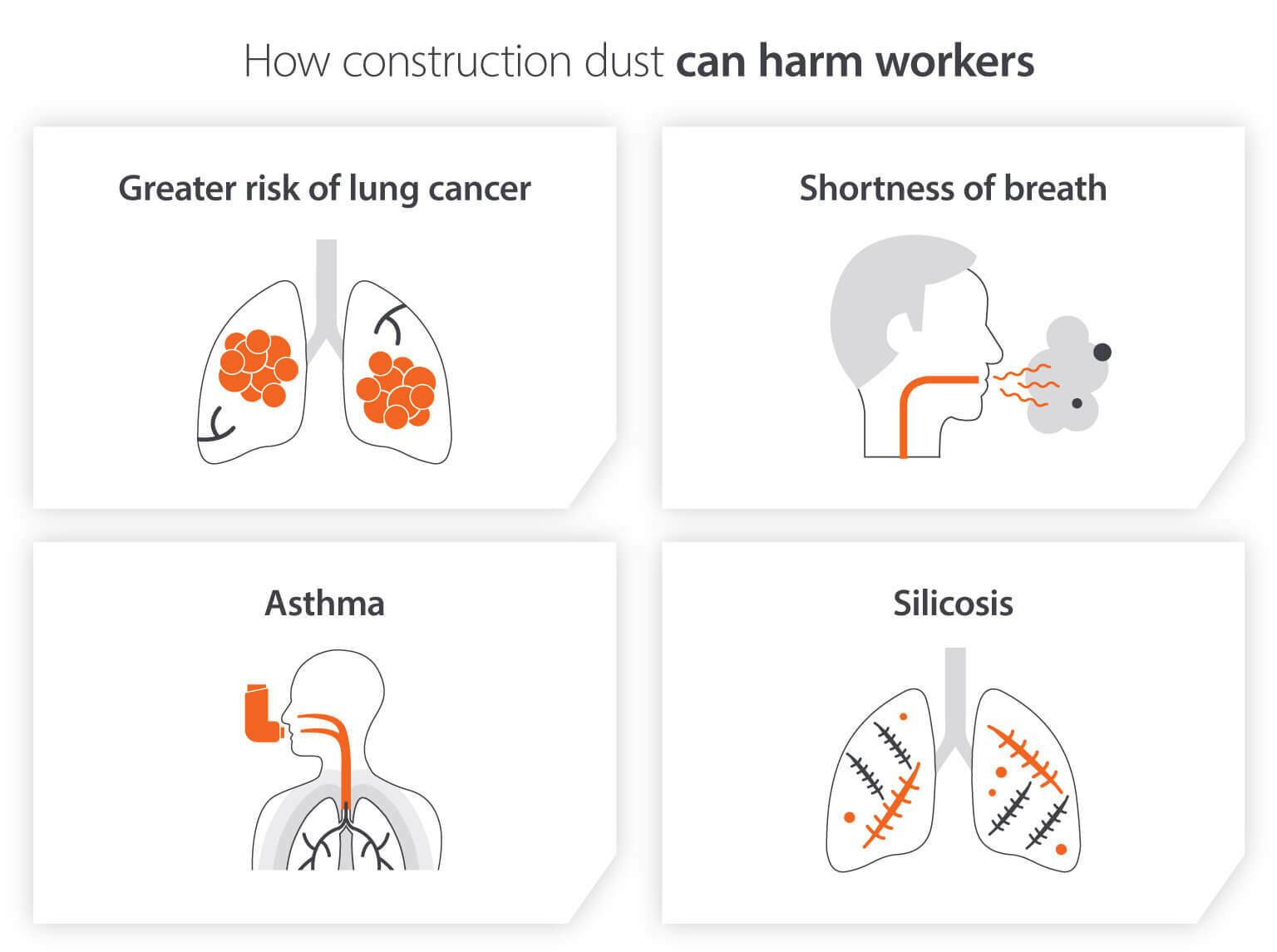
As well as increasing the likelihood of teams taking sick days, a lack of proper dust control or air monitoring can lead to conditions such as:
Lung cancer
Silicosis
Chronic obstructive pulmonary disorder (COPD)
Asthma
Asbestosis
Shortness of breath
How to monitor and control dust on a building site
Even though regulatory bodies around the world have slightly different approaches to workplace safety, the widely agreed-upon limits for construction dust on-site are as follows:
Inhalable dust (E-dust, AGW 10mg/m³)
Alveolar dust (A-dust, new AGW 1.25mg/m³)
In some cases it can be difficult to environmentally monitor dust levels with precision. That is why it is recommended to employ a combination of techniques and fit-for-purpose dust control systems to keep every site safe.
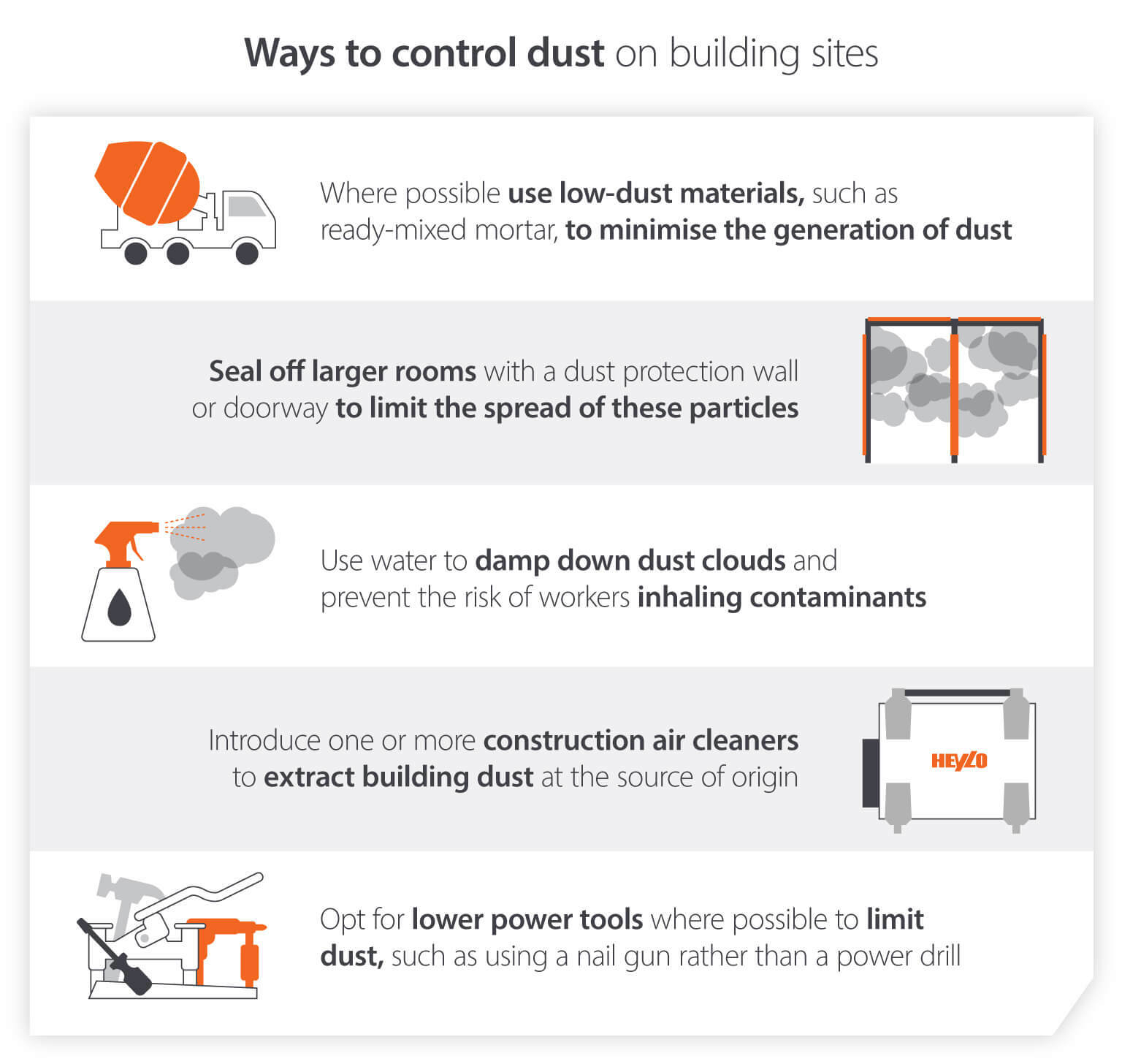
The benefits of controlling construction dust levels
Taking some of the measures we have discussed to mitigate the saturation of toxic construction dust in the air can have very real advantages for the people on-site and the project at large.
Greater worker health
By controlling and monitoring construction dust levels, sites become healthier. As well as improving worker attendance, a comfortable indoor atmosphere can keep teams focused for longer, meaning work is carried out quicker and to a higher standard.
Faster turnaround
Limiting the hazardous substances generated by construction work allows firms to keep unforeseen sick leave to a minimum. This also speeds up the post-cleaning process, improving the likelihood that work is delivered on time and on budget.
Adhesion to guidelines
Employing the techniques and tools to prevent exposure can help ensure teams work within safe and legal parameters on-site. This will help organisations maintain a positive reputation among their customers, employees and the wider world.
What air cleaning system do I need?
To ensure you are creating a safe, productive and healthy workspace for your team, it is important to select the right air cleaning system for your situation. As well as the size of the model, you should also carefully consider the type of filter needed.
Choosing the right size air cleaner
The main factor that will influence the model of air cleaner you need is the size of the room you intend to clean. As a rule of thumb the larger the room, the more power you will need from one or more devices.
While it may not always be possible to do so, consider deploying a dust protection wall in bigger spaces. This can help segment a room into a smaller and more manageable workspace, limiting the power required from an air cleaner.
For instance, the HEYWALL dust protection wall can offer protection in rooms up to 5m tall, allowing for substantial protection against dust without the time-consuming masking and covering of doors, windows and furniture. You might also benefit from specially-purpose dust protection doors, such as those found in the Heylo DCS range.
More often than not, a unit with a 6-8 fold air exchange is ideal. However, the rate at which a device can renew the air in a room depends on the power of the machine and the volume of the space.
To help you determine whether an air cleaner is capable of adequately servicing your space, use Heylo’s easy-to-use air exchange rate calculator.
Selecting an appropriate filter
Different materials on construction sites emit different types of dust. While all of these particles can be hazardous to health with great enough exposure, capturing these contaminants may rely on the use of a specific type of filter.
Class M filters are ideal for construction sites
HEPA filters are used to capture carcinogenic dust
Special regulations must be observed in case asbestos is present on-site
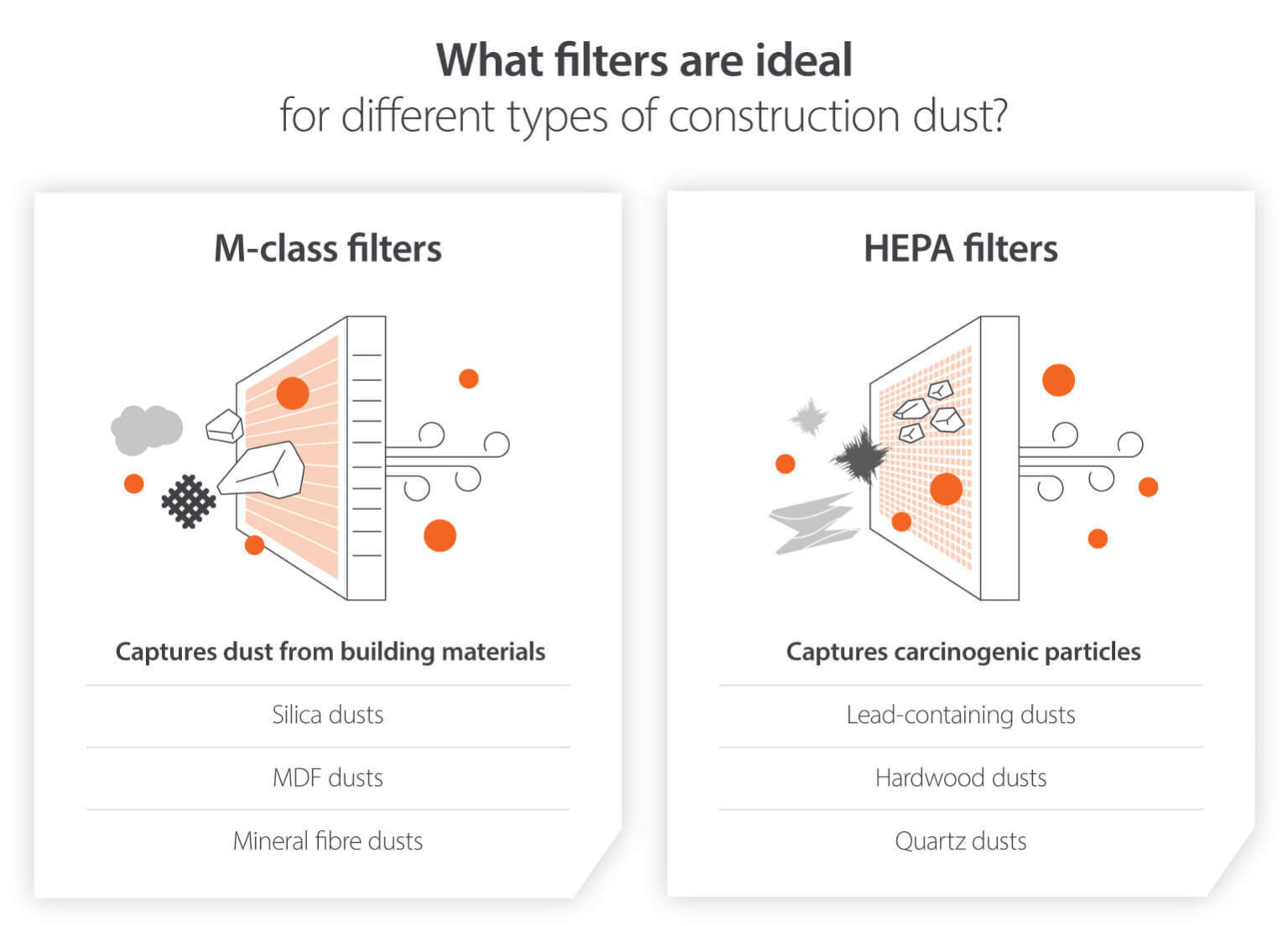
Talk to the experts
To ensure your teams are safe and productive, it’s crucial to employ solutions from a brand you can trust.
At Heylo, we are experts in construction site air cleaning. Our years of expertise have informed the design and development of a full range of units that emphasise usability, efficiency and sustainability.
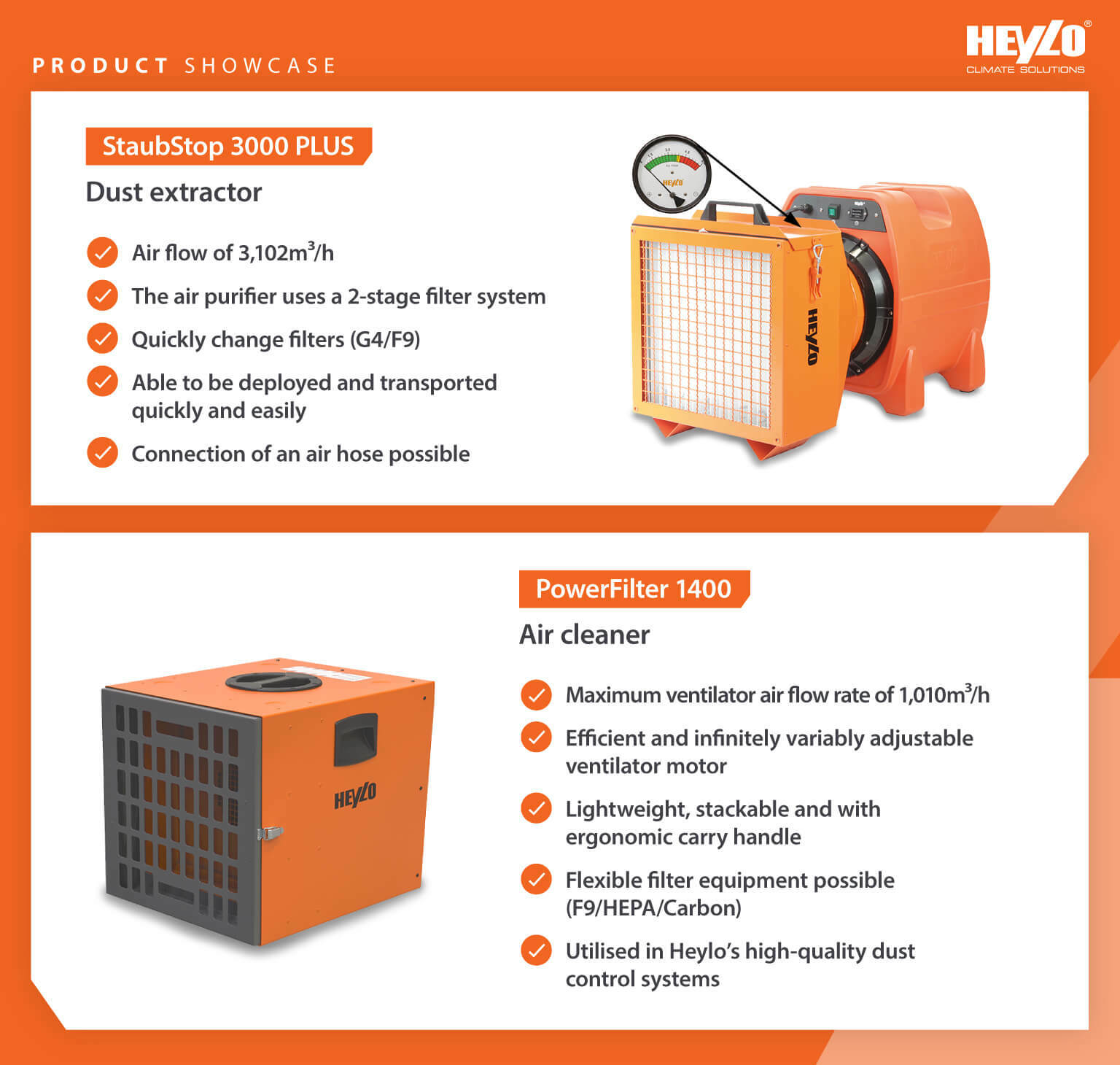
In addition to our vast experience, Heylo air cleaners are used the world over because they are highly flexible, durable and utilise only certified filters. Our technology is also powerful, rigorously tested and approved by organisational bodies, including the BG BAU.
If you would like to learn more about our full range of air cleaning products and how they can enhance your on-site air quality, get in touch with our team today.
Related products
Featured insights
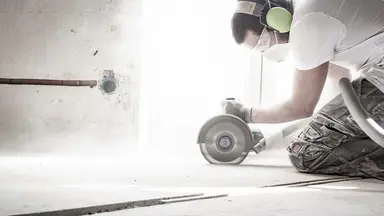
Creating healthy, clean air on construction sites.
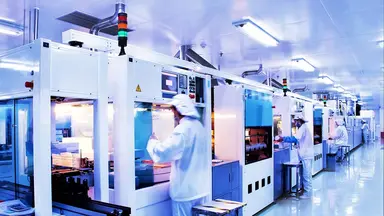
Efficient heaters and air purifiers for the plastics processing industry.
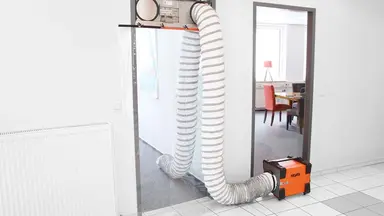
Discover the health and safety benefits that dust control systems can deliver to construction sites.
Need help with choosing the right solution? Our team of over 100 climate control experts can assist.
You can also reach out or join the discussion on our Social Media. Check out our LinkedIn page.
